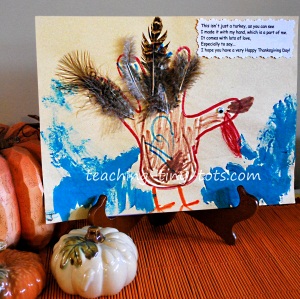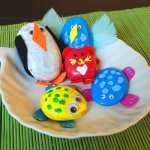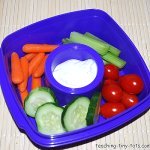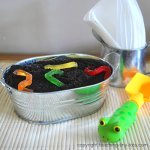Toddler Activities: Handprint Turkey and Poem
Description
Cute Handprint Turkey and free printable poem for Thanksgiving. Handprint crafts are always fun and easy to make for young children. They make great mementos too for scrap books. Embellish with feathers and wiggly eyes with a poem and make a card or even a Thanksgiving decoration.
Materials for the Handprint Turkey
- Construction Paper
- Markers
- Tempera Paint and brush
- Wiggly eyes
- Feathers (natural colored like in our handprint turkey example or fun colorful feathers)
- Elmer's Glue or Craft Glue such as Aleene's for a stronger bond
- Print out poem and glue on paper
Turkey Poem
This isn't just a turkey, as you can seeI made it with my hand, which is a part of me.
It comes with lots of love,
Especially to say...
I hope you have a very Happy Thanksgiving Day!
Steps
- Trace the hand of your child with marker. Students in a class can do this in small groups with a parent helper or teacher.
- Color turkey with marker or paint.
- Use the markers or paint to add details like the ground, sky, etc.
- Glue on the wiggly eye and feathers onto the traced hand.
- Print or copy poem onto paper and glue onto the picture.
Tips and Suggestions
Use colored foam to make the waddle or even trace the handprint on brown foam and cut out.Turkey Facts
- The turkey is one of the most famous birds in North America. In fact, Benjamin Franklin wanted to make the wild turkey, not the Bald Eagle, the national bird of the United States
- The wild turkey we often see in photos or pictures is not the same as the domestic turkey that we serve at Thanksgiving.
- Domestic or tame turkeys weigh twice what a wild turkey does and are raised on farms.
- Most domestic turkeys are so heavy they are unable to fly. Wild turkeys, however, can fly for short distances at speeds up to 55 miles per hour. They can also reach speeds of 25 miles per hour on the ground.
- Turkeys have great hearing, but no external ears. They can also see in color, and have excellent visual acuity and a wide field of vision, which makes sneaking up on them difficult.
- Turkeys have a poor sense of smell, but an excellent sense of taste.
- After the female turkey mates, she prepares a nest under a bush in the woods and lays her tan and speckled brown eggs. She incubates as many as 18 eggs at a time. It takes about a month for the chicks to hatch.




